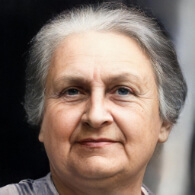Classification (Montessori)
In Montessori education, Classification refers to the process of sorting or grouping items according to shared characteristics.[1] Engaging in classification activities is deemed crucial for the construction of the intellect in young children. The Montessori classroom provides numerous opportunities for classification.
Montessori Quotes
- "It is exactly in the repetition of the exercises that the education of the senses exists; not that the child shall know colors, forms or qualities, but that he refines his senses through an exercise of attention, comparison and judgment."[2]
- "The environment must be rich in motives which lend interest to activity and invite the child to conduct his own experiences."[3]
Research and Critiques
- Pros: Classification activities in Montessori classrooms can enhance children's logical thinking, observational skills, and cognitive development.[4]
- Cons: Some critics argue that an overemphasis on classification and sorting activities may limit the scope of creative and divergent thinking in children.[5]
Comparisons to Other Methods
While classification activities are common across various educational approaches, Montessori uniquely integrates these into daily, self-directed activities, in contrast to traditional methods where such exercises might be part of a structured lesson.[6]
See Also
Glossary of Montessori Terms
The Glossary of Montessori Terms is a collection of specific terms and vocabulary that are related to the Montessori method of education, primarily focusing on the theory and practice for children aged 3 to 6. The jargon used by Montessori educators offers a unique insight into child development as discussed by Maria Montessori. The 'Montepedia Glossary of Montessori Terms' originated from a glossary that was compiled by the late Annette Haines from the Montessori Training Centre of St. Louis, at the request of Molly O'Shaughnessy from the Montessori Centre of Minnesota. The reason behind the creation of this glossary was to supplement O'Shaughnessy's lecture at the Joint Annual Refresher Course that took place in Tampa, Florida, in February 2001.[7] The glossary has since been expanded and updated with additional 'Montessori Terms'.
- 3-Hour Work Cycle
- Absorbent Mind
- Adaptation
- Adolescence
- Albums
- Advisor
- Analysis of Movement
- Casa dei Bambini
- Children of the Earth
- Children's House
- Choice
- Classification
- Concentration
- Concrete to Abstract
- Control of Error
- Coordination of Movement
- Cosmic Education
- Creativity/Imagination
- Cycle of Activity
- Development of the Will
- Deviations
- Didactic Materials
- Director
- Discipline from Within
- Earth Child
- Elementary Classroom
- Erdkinder
- Exercises of Practical Life
- False Fatigue
- Freedom of Choice
- Freedom within Limits
- Grace and Courtesy
- Great Stories
- Ground Rules
- Guide
- Help from Periphery
- Human Tendencies
- Imagination
- Independence
- Indirect Preparation
- Indirect Presentation
- Isolation of a Difficulty
- Intrinsic Motivation
- Job
- Kinderhaus
- Language Appreciation
- Language Acquisition
- Learning Explosions
- Materials
- Materialised Abstractions
- Mathematical Mind
- Maximum Effort
- Mixed Ages
- Montessori Materials
- Nido
- Montessori Materials
- Normalization
- Obedience
- Peace
- Personality
- Planes of Development
- Points of Interest
- Practical Life
- Phonemic Awareness
- Phonics Instruction
- Phonological Awareness
- Prepared Environment
- Presentation
- Primary Classroom
- Psychic Embryo
- Reading Comprehension
- Repetition
- Respect
- Self-Discipline
- Self-Regulation
- Sensitive Periods
- Sensorial Materials
- Simple to Complex
- Socialization
- Society by Cohesion
- Sound Games
- Three-Hour Work Cycle
- Valorisation
- Vocabulary Enrichment
- Work
Please help to translate this page into your local language
References
- ↑ Montessori, M. (1967). The Discovery of the Child. Ballantine Books.
- ↑ Montessori, M. (1967). The Discovery of the Child. Ballantine Books.
- ↑ Montessori, M. (1967). The Discovery of the Child. Ballantine Books.
- ↑ Lillard, A. (2017). Montessori: The Science Behind the Genius. Oxford University Press.
- ↑ Egan, K. (2002). Getting it wrong from the beginning: Our progressivist inheritance from Herbert Spencer, John Dewey, and Jean Piaget. Yale University Press.
- ↑ Mooney, C. (2013). Theories of Childhood, Second Edition: An Introduction to Dewey, Montessori, Erikson, Piaget & Vygotsky. Redleaf Press.
- ↑ Haines, A. (2001). Glossary of Montessori Terms. Montessori Training Centre of St. Louis.
